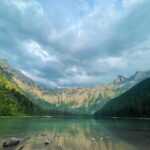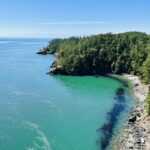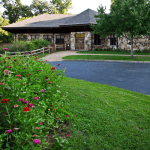Tower Hill State Park
Key Information
Contact Info
608-935-2315
Location
5808 County Rd C, Spring Green, WI 53588, United States
Opening Hours
6am–11pm
Fee
$4
Introduction of Tower Hill State Park
The 77-acre Tower Hill State Park, which is beautifully situated above the Wisconsin River, has camping areas, nature and hiking paths, and picnic areas. The park is appealing to individuals who like natural settings due to its highland forests, a large variety of plants, bushes, birds, and animals, as well as a 175-foot cliff made of Cambrian sandstone.
Due to the presence of the lead region settlement of Helena and the tower that Green Bay businessman Daniel Whitney and his colleagues constructed to produce lead shot, the area has significant historical significance for Wisconsin. Whitney, an enthusiastic Yankee businessman who moved to Green Bay in the 1820s, engaged in a broad range of potentially lucrative endeavours, including logging on the upper Wisconsin (long before Indian title had been extinguished), trafficking in furs, and speculating on town sites. In 1830, when Wisconsin lacked a shot tower and he wanted to sell lead in the East, he created a commercial partnership to produce lead shot. After being delayed by the Black Hawk War, construction started in 1831 and was finished in 1833.
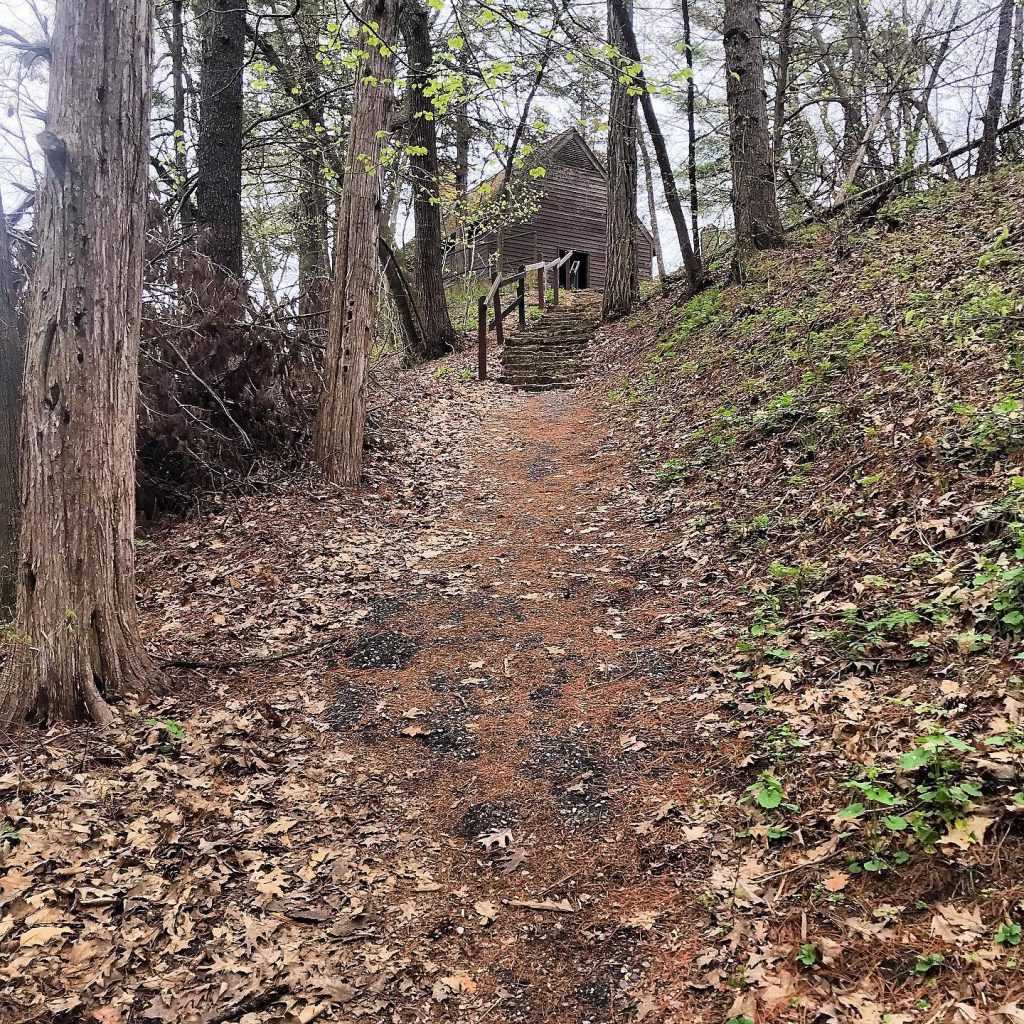
Tower Hill State Park Activities
Camping
All 11 of the park’s campsites are offered on a first-come, first-served basis from May through October. There are vault toilets and drinking water available at the campground, but no electrical outlets.
Hiking
The 76.5-acre park has two kilometres of pathways that meander around it.
Boating
The Lower Wisconsin State Riverway includes Tower Hill.
Fishing
Tower Hill is located along the Lower Wisconsin State Riverway, which has lots of fishing options.
Picnicking
There is a shelter building that may be rented that measures 24 by 60 feet.
Historic Sites
When the first white explorers arrived in 1673, the area that is now Tower Hill State Park was already old. On their exploration of the Wisconsin River, Pere Jacques Marquette and Louis Joliet went this route. While travelling the river in 1830, Daniel Whitney of Green Bay spotted the abruptly rising cliff. It was then more well-known but yet relatively sparsely populated. Being a businessman, he saw possibilities for building a tower to produce the shotgun lead pellets. There were several mines in the area that could supply the company with lead. Whitney engaged Galena, Illinois-based lead miner Thomas Bolton Shaunce to drill a shaft that would reach the river’s level below the crest of the bluff. Shaunce came in 1831 and dug the 120-foot-deep shaft and 90-foot tunnel between the shaft and the riverside over the course of the following two years so that the shot tower could be constructed. Malcom Smith, a fellow miner, provided occasional support to Shaunce, who worked primarily alone. The Black Hawk War (1832), which occurred while Shaunce and Smith were at work, prevented them from finishing. The tower’s overall height was 180 feet, with a wooden shaft 60 feet high constructed next to the cliff above the stone shaft. At the top and bottom of the tower, respectively, smelting and finishing houses were constructed to complete the structures.
Hunting
Without a CWD State Park Deer Hunting Access Permit and a property map showing the portions of the park lands that are forbidden to hunting, no one is permitted to shoot deer at Tower Hill State Park during the park’s open deer hunting season.

Tower Hill State Park History
Natural history
Jordan Sandstone is used to create the Wisconsin River’s cliffs. The park is located in the Driftless Area, a part of the American Midwest that saw no more than one ice age. The Wisconsin River ran right along the base of the bluffs in the nineteenth century. Since then, the river has changed significantly, and Mill Creek now forms the park’s northern boundary.
History of the shot tower
Shot towers, a method created in 1782, take use of the surface tension on liquids in free fall. At the peak of a tower or shaft, molten lead can be poured through a strainer. The droplets cool and assume a spherical form as they descend, becoming spherical in the process. To halt their fall and complete cooling, the pellets are trapped in a water basin.
A Green Bay, Wisconsin, merchant named Daniel Whitney was travelling along the Wisconsin River in 1830 when he saw a steep cliff close to the town of Helena as a potential site for a shot tower. Recently, lead deposits had been found in a number of Iowa County areas. The sandstone cliff sloped down to the riverbank 180 feet (55 m) below the clifftop after a 60-foot (18-meter) steep plunge from the top of the bluff. Together with a few other partners, Whitney established the Wisconsin Shot Company and assigned his employee John Metcalf to manage the building process.
The 60-foot (18-meter) cliff provided a handy headstart, but Metcalf still required help continuing a shaft for the final 120 feet (37-meter) to the earth. The lead shot would be gathered at the bottom of the shaft, therefore access to that location required a 90-foot (27 m) horizontal tunnel. Thomas B. Shaunce, a lead miner in Galena, Illinois, was employed for the job in 1831 at the age of 22.
Shaunce worked primarily by himself, with a little help from a buddy named Malcom Smith. Gunpowder was used to break up the lowest strata of tougher rock while they excavated with pickaxes and a gad. Shaunce used a windlass to remove the shattered rock and a plumb-bob to make sure the shaft remained precisely straight. Standing across the lake and pointing his rifle just below the top of the shaft, Shaunce determined where to start building the horizontal tunnel. He positioned himself from the riverside, using a string of posts to keep him in place. Shaunce was knocked out and had one of his lungs collapse when he initially made it down the horizontal tunnel to the bottom of the shaft.
It took 187 working days to complete the project, which was halted in the spring of 1832 when Shaunce and Smith both went back to Galena and volunteered in the Illinois Militia to participate in the Black Hawk War. Although Shaunce had agreed to get $1000 as compensation for his efforts, he eventually received land.
At the cliff’s peak, a smelting house was constructed, and a wooden shaft was made to confine the 60-foot (18 m) plunge to Shaunce’s tunnel’s entrance. On the bank of the river, a finishing house was constructed, where the shot was graded and sorted. A warehouse and docks connected to this. Whitney sold the land for $10,000 to a consortium of New York merchants in 1836. Later, the site was bought by Cadwallader C. Washburn and a business partner. They renovated the finishing building and put in steam-operated machinery in 1852, greatly increasing the output of the business. Six people managed the shot tower, which churned out 600 to 800 pounds of good shot each day. Miscast parts were melted down and utilised again. The final photo was delivered to Milwaukee after being sized and sorted.
Due to a slump in the economy, operations were stopped in 1860, and the buildings and equipment were given away. Helena’s village was abandoned shortly after that. Around 1860, Thomas Shaunce also passed away. He endured breathing problems for the rest of his life as a result of the air explosion in the tunnel and believed he had been shorted of his rightful compensation.
According to historians, the Helena Shot Tower played a vital role in the development and economy of southwest Wisconsin by enabling the shipment of completed resources from the frontier. A road and eventually a rail line were established from the overland teamster route that was created to convey the operation’s produce to the east. Wagon crews returned with supplies and immigration. The Mississippi River, which once again connected Southwestern Wisconsin to the South, helped the region develop a population and culture that were more Northeast-centric.

Later history
The eminent Unitarian clergyman Jenkin Lloyd Jones, a descendant of a well-known Welsh-American family in the area, bought the property in 1889 for $60. The Tower Hill Pleasure Company, which he founded, was a getaway for leisure and education that included outdoor activities, guest lectures, literature, and music. 25 cottages, a dining pavilion, tennis courts, and other buildings were eventually added to the retreat. A history professor who taught in 1894 spent his own time digging the shot tower’s shaft and found a number of items that Lloyd Jones later donated to the Wisconsin Historical Society. Of a nearby hill, Jones’ nephew Frank Lloyd Wright started construction on his studio Taliesin in 1911.
When Lloyd Jones passed away in 1918, his wife Edith donated the land to the government; as a result, Tower Hill State Park was established in 1922. The Wisconsin Department of Natural Resources and the Wisconsin Historical Society reconstructed the smelting house and wooden shaft between 1970 and 1971.
The state park served as the backdrop for some of the 2006 horror thriller Witches’ Night.
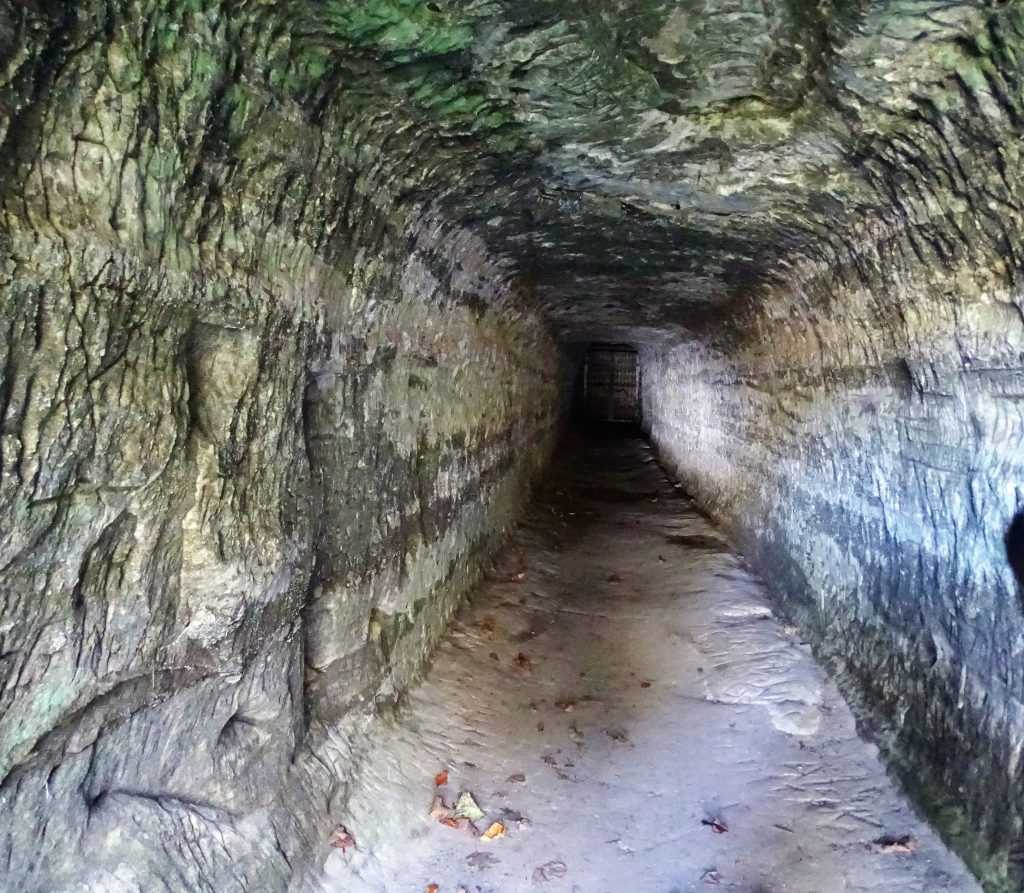
Transportation
Driving
Tower Hill State Park is 3.5 miles southeast of Spring Green and is situated in southwest Wisconsin.
Parking
Parking is available.
Public Transport
Public Transport is available.

